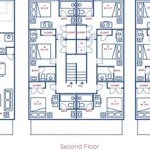Plans for container houses involve designing and creating dwellings using shipping containers as the primary construction material. These houses offer a unique and sustainable alternative to traditional housing methods, prioritizing efficiency, flexibility, and affordability.
From compact container cabins to multi-story structures, container houses can cater to various needs and styles. They provide a cost-effective solution for affordable housing projects, disaster relief shelters, and even off-grid living. The modular nature of shipping containers allows for adaptability and scalability, making it easy to modify or expand the design as required.
In the following sections, we will delve deeper into the advantages, design considerations, and construction techniques involved in container housing. We will explore the architectural possibilities and practical applications of this innovative approach to sustainable building.
Here are eight important points about plans for container houses:
- Sustainable and eco-friendly
- Cost-effective and affordable
- Durable and long-lasting
- Versatile and adaptable
- Fire-resistant and secure
- Easy to transport and assemble
- Unique and architecturally appealing
- Suitable for various applications
These factors make container houses an attractive option for those seeking sustainable, affordable, and innovative housing solutions.
Sustainable and eco-friendly
Container houses are considered sustainable and eco-friendly due to several factors:
- Recycled materials: Shipping containers are typically made of corten steel, a durable and corrosion-resistant material. By using recycled shipping containers for construction, container houses reduce the need for new materials and conserve natural resources.
- Reduced construction waste: The modular nature of container houses minimizes construction waste. The containers themselves are prefabricated, and the assembly process is relatively straightforward, resulting in less waste compared to traditional construction methods.
- Energy efficiency: Container houses can be designed to be energy-efficient. The steel structure provides good insulation, and the compact design reduces heat loss. Additionally, container houses can be equipped with energy-efficient appliances and systems, such as solar panels and rainwater harvesting systems.
- Durability: Container houses are known for their durability and longevity. Shipping containers are designed to withstand harsh conditions during transport, making them robust and resistant to wear and tear. This durability reduces the need for frequent repairs and replacements, contributing to the long-term sustainability of container houses.
By incorporating sustainable practices and materials, container houses offer an eco-conscious approach to housing that minimizes environmental impact and promotes resource conservation.
Cost-effective and affordable
Container houses offer several advantages that make them a cost-effective and affordable housing solution:
Lower material costs: Shipping containers are readily available and relatively inexpensive compared to traditional building materials. The use of recycled containers further reduces material costs, making container houses an attractive option for budget-conscious builders.
Reduced labor costs: The modular design of container houses simplifies the construction process, reducing labor costs. The containers are prefabricated and assembled on-site, eliminating the need for extensive on-site construction. This streamlined process saves time and labor expenses.
Simplified foundation requirements: Container houses typically require less extensive foundation work compared to traditional houses. The steel structure of the containers provides stability and strength, allowing for simpler and less costly foundation systems.
Long-term savings: Container houses are durable and require minimal maintenance, leading to long-term savings on repairs and replacements. The steel structure is resistant to rot, pests, and weather damage, reducing the need for costly repairs or renovations.
Overall, the cost-effectiveness and affordability of container houses make them a viable option for individuals and families seeking sustainable and budget-friendly housing solutions.
Durable and long-lasting
Container houses are renowned for their durability and longevity, offering several advantages that contribute to their long-lasting nature:
- Robust construction: Shipping containers are designed to withstand harsh conditions during transport and storage. They are made of corten steel, a durable and corrosion-resistant material that provides structural integrity and strength. This robust construction ensures that container houses can endure various weather conditions and environmental factors.
- Resistance to pests and rot: Unlike traditional building materials such as wood, shipping containers are not susceptible to pests or rot. The steel structure and sealed design prevent the entry of insects, rodents, and moisture, which can cause damage and deterioration over time.
- Minimal maintenance requirements: Container houses require minimal maintenance compared to traditional houses. The steel structure is durable and does not require regular painting or sealing. The exterior surfaces can be easily cleaned and maintained, ensuring the longevity of the house.
- Adaptability to different climates: Container houses can be adapted to suit various climatic conditions. They can be insulated to provide warmth in cold climates and equipped with ventilation systems for hot and humid climates. This adaptability ensures that container houses can withstand extreme temperatures and weather conditions, extending their lifespan.
Due to their durability and long-lasting nature, container houses represent a sustainable and resilient housing option that can withstand the test of time.
Versatile and adaptable
Container houses offer exceptional versatility and adaptability, making them suitable for a wide range of applications and design preferences.
Modular design: The modular nature of shipping containers allows for flexibility in design and construction. Containers can be stacked, combined, and modified to create structures of various sizes and configurations. This modularity enables architects and builders to customize container houses to meet specific needs and preferences.
Multipurpose use: Container houses are not limited to residential use. They can be adapted for various purposes, including commercial, recreational, and even disaster relief. Shipping containers have been used to create offices, retail stores, cafes, art studios, and temporary housing units. Their versatility makes them a suitable solution for a diverse range of needs.
Adaptability to different terrains: Container houses can be adapted to different terrains and site conditions. They can be elevated on stilts or foundations to accommodate uneven or sloping ground. Additionally, the steel structure provides stability and strength, making container houses suitable for areas prone to earthquakes or other natural disasters.
The versatility and adaptability of container houses make them an attractive option for those seeking sustainable, customizable, and multi-purpose building solutions.
Fire-resistant and secure
Container houses offer inherent fire resistance and security due to the unique properties of shipping containers and the construction methods employed.
Fire resistance: Shipping containers are constructed from corten steel, a type of weathering steel that forms a protective oxide layer on its surface. This oxide layer provides excellent resistance to fire and heat. Additionally, the enclosed and sealed design of containers minimizes the flow of oxygen, further enhancing fire resistance. As a result, container houses can withstand fires for extended periods, providing occupants with valuable time to evacuate.
Security: Shipping containers are designed to be secure and tamper-proof. They feature robust locking mechanisms and reinforced doors, making them difficult to break into. The steel structure provides additional strength and resistance to forced entry. Furthermore, container houses can be equipped with security systems, such as alarms, surveillance cameras, and motion sensors, to enhance security and deter potential intruders.
Impact resistance: The robust construction of shipping containers makes them highly impact-resistant. They can withstand strong winds, earthquakes, and other external forces without compromising structural integrity. This impact resistance ensures the safety of occupants and the longevity of the house.
Overall, the fire-resistant and secure nature of container houses provides peace of mind and protection for occupants, making them a reliable and secure housing option.
Easy to transport and assemble
Container houses are renowned for their ease of transport and assembly, making them a practical and efficient building solution.
Transportation: Shipping containers are designed for efficient transportation. They are standardized in size and can be easily loaded onto trucks, trains, and ships. This standardized design allows for seamless transportation over long distances, making container houses suitable for remote or inaccessible locations.
Assembly: Container houses are relatively easy to assemble compared to traditional houses. The modular nature of the containers simplifies the assembly process. The containers are typically pre-fabricated and equipped with necessary fixtures and fittings. On-site assembly involves connecting the containers, installing insulation, windows, and doors, and completing the interior and exterior finishes. This streamlined assembly process reduces construction time and labor costs.
Flexibility: The modular design of container houses allows for flexibility during assembly. Containers can be stacked vertically or horizontally to create different configurations and floor plans. This flexibility enables architects and builders to customize container houses to suit specific needs and site conditions.
Reduced construction time: Due to the pre-fabricated nature of the containers and the simplified assembly process, container houses can be constructed in a shorter timeframe compared to traditional houses. This reduced construction time allows for faster occupancy and cost savings.
Unique and architecturally appealing
Container houses stand out for their unique and architecturally appealing designs that blend functionality with aesthetics. The industrial appearance of shipping containers, with their corrugated steel walls and bold geometric shapes, provides a distinctive character that can be embraced or transformed through creative design approaches.
Architects and designers have embraced the inherent qualities of shipping containers to create innovative and visually striking structures. By combining multiple containers in various configurations, they can achieve complex forms and spatial arrangements. The modular nature of the containers allows for flexibility in design, enabling architects to experiment with different layouts, stack containers vertically or horizontally, and incorporate unconventional angles and shapes.
The exterior of container houses can be further enhanced through the use of different cladding materials, paints, and finishes. Architects can choose to retain the industrial look of the containers or transform them with vibrant colors, sleek finishes, or natural materials like wood or stone. This versatility allows container houses to blend seamlessly into various architectural styles and surroundings, from urban landscapes to coastal settings.
Additionally, the large open spaces within shipping containers provide ample opportunities for creative interior design. Architects can incorporate high ceilings, expansive windows, and open floor plans to create bright and airy living spaces. The exposed steel structure can be painted or left in its raw state, adding an industrial chic to the interior. Container houses offer a unique canvas for architects and designers to showcase their creativity and push the boundaries of architectural design.
Suitable for various applications
Container houses offer a versatile solution for a wide range of applications, extending beyond traditional residential uses. Their unique design and inherent advantages make them suitable for various purposes, including:
Commercial applications: Container houses can be adapted for commercial use as offices, retail stores, cafes, and showrooms. Their modular design allows for easy customization to meet spezifc business needs. The robust construction and durability of shipping containers ensure longevity and withstand the demands of commercial activities.
Hospitality and tourism: Container houses can be transformed into unique and eco-friendly accommodation options for hotels, resorts, and glamping sites. Their compact size and transportability make them suitable for remote or off-grid locations. The inherent strength and durability of containers ensure guest safety and comfort.
Community and public spaces: Container houses can serve as community centers, libraries, schools, and healthcare facilities in underserved areas or during emergencies. Their modular design enables rapid deployment and easy expansion to meet changing needs. The durable construction withstands harsh conditions and provides secure and reliable spaces for community activities.
Emergency housing: Container houses have proven to be an effective solution for temporary or emergency housing during natural disasters or humanitarian crises. They can be quickly deployed to provide safe and secure shelter for displaced populations. The durability and ease of transportation make them ideal for disaster relief efforts.










Related Posts








